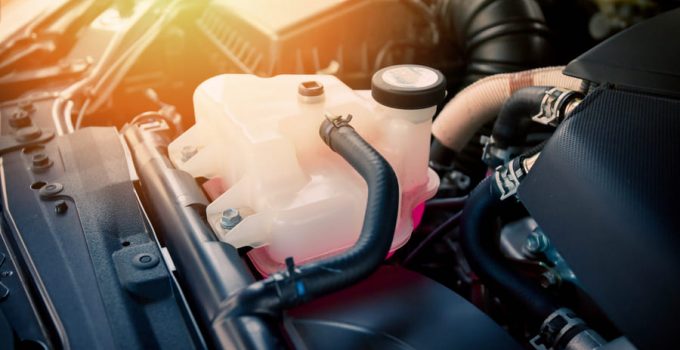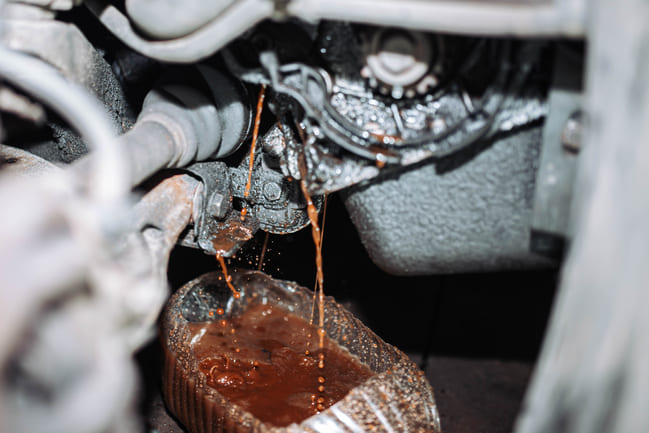
Your cooling system prevents your vehicle engine from overheating. Should this suddenly fail completely, this will quickly result in engine damage. Overall, more than half of vehicle engine damage is caused by a failure in the cooling system. For this reason, regular maintenance and care of the associated components is worthwhile. This also means, for example, that the cooler has to be cleaned of any contamination that has accumulated. This can be done with a special cleaner for the cooling system. In the following article, we will explain how to use it and how to keep the engine cooling in perfect condition.
Contents
When and why should you flush your cooling system?
Even if you always use a particularly high-quality coolant, hoses, the water pump and the heat exchangers will wear out over time. This in turn means that the smallest particles can be deposited. Such deposits can lead to the clogging of the finest channels, so that the heat exchange is impeded. For this reason, most vehicle manufacturers recommend regular cooling system flushing. The specified interval is usually a maximum of 10 years or 30,000 kilometers driven. If you would like more detailed information on this, you can usually find it in the vehicle's technical manual. Alternatively, you can also ask your vehicle workshop or your vehicle manufacturer.
Flushing your cooling circuit has a number of other advantages in addition to removing possible contaminants. The lubrication of all cooling system components is renewed when you replace the entire cooling water and not just refill it again and again. This also helps extend the life of your water pump. In addition, after refilling, you can be sure that there is only a high-quality coolant in the corresponding circuit. Since replacing the cooling water usually does not include venting, you no longer have to worry about what happens if there is air in the cooling system. Finally, you optimize the protection of the motor against excessive temperatures. The improved protection against corrosion prevents rust in the cooling water.
How does such a cleaning work?
The first step is to start by thoroughly cleaning the outside of the cooler (i.e. the heat exchanger) from dirt. The area around the radiator cap is particularly important – after all, no additional dirt should get into the cooling water circuit. Once you have done this, it is a good time to carry out a visual inspection of the heat exchanger. You should of course pay attention to obvious leaks, but also to signs of corrosion or rust. Such spots can quickly cause new leaks and are often also responsible for poor system performance. In addition, you should also look at the connecting hoses of the entire cooling system, especially the connections to your vehicle's engine. In addition to mechanical damage, this also includes possible leaks.

Now the cooling water is drained. First of all, you need a sufficiently large container to be able to comfortably collect the entire amount of coolant. The working liquid (and also the later flushing liquids) must not get into the ground water or the oil separator under any circumstances, because these are very toxic and harmful to the environment. Once you have done this, position the container below the drain screw on the corresponding valve. Now put on rubber gloves to open this screw. Sometimes a wrench is even necessary for this if it is too tight. If the coolant only drips out slowly, you can screw the drain plug back in. Now the rinsing takes place. To do this, fill the expansion tank with fresh (preferably distilled) water. If this is extremely dirty or can hardly be recognized as such, we strongly recommend that you replace the car coolant tank to prevent future problems. In the case of light soiling, you can clean the coolant expansion tank manually.
After filling in the fresh distilled water, you must ensure that the working liquid in the cooling water circuit is also circulated. The easiest way to do this is to simply let your vehicle engine run. Fifteen minutes of idling should do the trick. Your vehicle engine must then cool down completely before you can drain the flushing water. In most cases, cooling takes 1-2 hours. If you do not ensure that your engine is cold before the next step, the very hot fumes can cause painful scalding. You can then drain the cooling water again as before. If the rinsing liquid is heavily contaminated, it may be worth using special rinsing liquids or additives. It is best to consult the operating instructions for your vehicle and those for the flushing fluid. The latter must under no circumstances attack the seals and must also be compatible with all metals used in the cooling system.
How do I refill my cooling system and how can I bleed the cooling circuit?

The easiest way is to bleed directly when filling. First of all, you should drain the cooling system in order to fill it with the new, final coolant immediately afterwards. You fill this into the car cooling water tank. However, it is now important that you leave the lid open and start your vehicle. Now set the heating for the passenger compartment to the highest possible level or temperature. Again, you should let your engine idle for 15 minutes again. In this way, any air pockets are removed so that the cooling circuit is automatically vented. After a quarter of an hour, the engine can now be switched off and the expansion tank cap reassembled. This is how the required pressure is built up.
Conclusion
If you have some experience as a mechanic and are not afraid to handle dangerous liquids under the given protective measures, you shouldn't find it difficult to flush your cooling system yourself. Nevertheless, we advise newcomers to contact a specialist workshop so that they can carry out the work. It is then only important for you to know how the whole thing works and what you can expect afterwards as a result.
A tip from CarTipsandmore: The procedure described here helps with many vehicles to flush the cooling water circuit. However, you should note that modern vehicles may also use other systems. In some cases, so-called flat tube systems are used, which prevent effective flushing. It can therefore happen that even after the cooling circuit has been completely cleaned, some components have to be replaced in order to restore optimal function.
